6+ SAMPLE Restaurant Rental Agreement
-
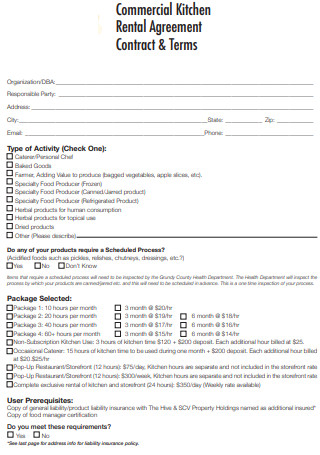
Commercial Restaurant Rental Agreement
download now -
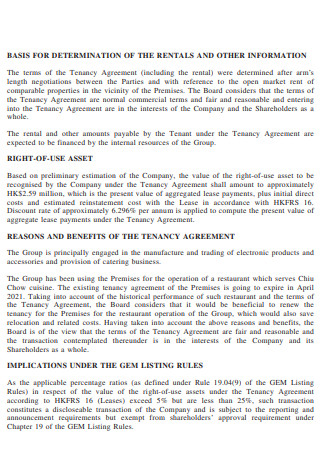
Restaurant Tenancy Rental Agreement
download now -
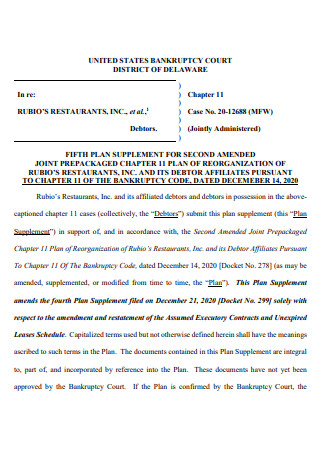
Restaurant Supplemental Rental Agreement
download now -
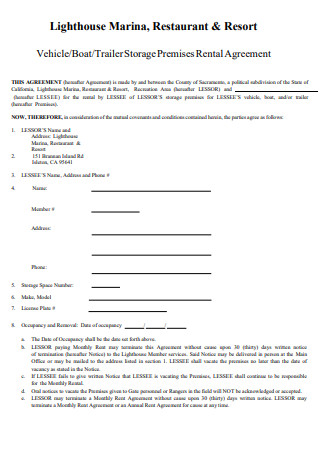
Restaurant Vehicle Rental Agreement
download now -
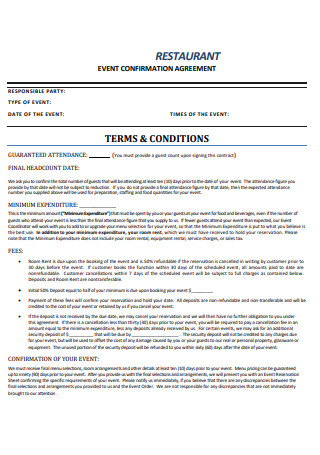
Restaurant Room Rental Agreement
download now -
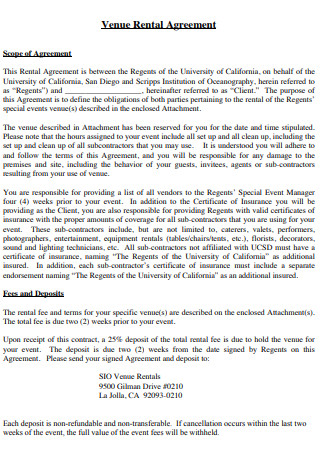
Restaurant Venue Rental Agreement
download now -
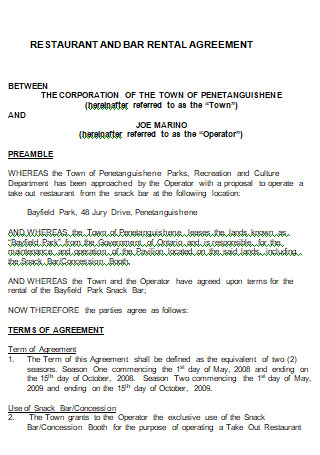
Restaurant Bar Rental Agreement
download now
FREE Restaurant Rental Agreement s to Download
6+ SAMPLE Restaurant Rental Agreement
What Is a Restaurant Rental Agreement?
Tips for Finding a Suitable Restaurant
Disadvantages of Buying a Restaurant Property
How to Write a Restaurant Rental Agreement
FAQs
What is the cost of renting a restaurant space?
What is the best type of lease for a restaurant?
What are the pros of leasing a commercial property?
What Is a Restaurant Rental Agreement?
A restaurant rental agreement is a document that allows a renter to use and occupy a landlord’s property for a set length of time. A rental agreement usually has a monthly period until it expires and the parties renew it each month. The tenant pays the landlord the agreed-upon rent in exchange for the tenancy. A restaurant rental agreement is more or less the same as the basic rental agreement only that the restaurant will then open as an establishment as opposed to private property. You can proceed to check out the restaurant rental agreement sample for additional reference.
Tips for Finding a Suitable Restaurant
When viewing possible places, there are so many elements to keep in mind that it can be daunting. Going in with a strategy, on the other hand, can make all the difference. To assist you, this article has included a compiled list of ideas on how to choose a restaurant space that suits your needs. Even though you are eager to get your restaurant up and running, it’s critical that you don’t lease the first restaurant space you come across. Instead, you should carefully examine places to verify that they fit all of your requirements. Keep the items listed below in mind.
Disadvantages of Buying a Restaurant Property
If you have enough cash for a down payment and six months’ worth of mortgage payments without putting your company under a cash constraint, it’s usually a better idea to buy. If you want to rent out part of the space to produce a secondary income stream, build equity in the property, and reorganize the area as you see fit, purchasing would be a suitable alternative. However, if you want the flexibility to move out at the conclusion of the lease, avoid tying up your money in a down payment, and so on, leasing may be the best option.
How to Write a Restaurant Rental Agreement
This is the part of the article where we will guide you in preparing a restaurant rental lease agreement. It won’t be easy to prepare especially if you are unfamiliar with the process and much more if you are new to the environment. If you find that the samples provided in this article are not sufficient for the specifics you are looking for, then you may draw inspiration from the restaurant lease agreement template that this site has readily available. With that being said, proceed to the guide below so you can start to write your restaurant rental agreement.
Step 1: State Parties Involved
To start out your agreement, you will need to define the parties that are involved in the document. List out the name, address, and contact information of your landlord followed by details that specify you or the company owner who would want to secure the property. Make sure that the information has been proofread otherwise you will need to conduct changes.
Step 2: Construct Your Lease Clauses
Each provision must be specific and contain all relevant facts. This is the process of converting clauses into provisions. Each clause must be enforceable, therefore consult an attorney to confirm that the clauses contain all of the information needed to make a legally binding contract. Be sure that the clauses will fulfill your needs as well as be within the bounds of the landlord.
Step 3: Specify Rent Amount and Taxes
This provision should specify how much and when the tenant will pay the landlord. This may be split in monthly installments or managed on a yearly basis, depending on payment agreements. If applicable, restaurant lease agreements include a base rate as well as processes for applying fair market rental rates. The landlord is responsible for paying these, albeit in some cases, they may only cover a fraction of the taxes or only manage them for a limited time before passing the responsibility on to the tenant. Regardless of the solution chosen, it must be specified in the leasing agreement.
Step 4: Mention the Need for Alterations
Generally, landlords encourage tenants to refrain from making significant changes to the properties they lease unless they first acquire permission. As a result, the lease agreement should state when written authorization is required. Before painting the exterior of the building or the interior of the premises, for example, permission may be required. Tenants may also be limited in their signage placement options.
Step 5: Repair and Maintenance Obligations
Maintenance responsibilities are frequently split between the restaurant tenant and the landlord. Specify when particular parties will be required to accomplish various kinds of repairs or maintenance tasks. The agreement may, for example, state that the renter is responsible for the upkeep of HVAC systems. Don’t forget to specify how and when the landlord may perform maintenance activities on the tenant’s behalf, particularly if the tenant fails to meet the agreement’s duties.
FAQs
What is the cost of renting a restaurant space?
The typical cost of monthly rent is $5000, according to a restaurant owner survey of over 400 restaurants across the US. In prominent cities, it can be even more expensive. Renting out a restaurant for pop-ups or short-termers can cost anywhere from $100 to $500 per hour, with the price varying greatly based on location. In San Francisco, for example, an upmarket sake tasting room for hire costs $2,000 per hour for at least two hours.
What is the best type of lease for a restaurant?
A short-term lease allows you the flexibility to relocate if you need more room, but a long-term lease ensures that you won’t have to worry about relocation costs after you have settled in. Landlords will usually give you a better bargain if you sign a long-term lease. You can utilize the sample commercial restaurant lease agreement to ensure you didn’t forget any important information. It is important to be strategic about the length of the lease you are planning for your restaurant.
What are the pros of leasing a commercial property?
Since you don’t have to pay a down payment to move into a commercial property, leasing will help you to save a considerable amount of money. When you lease a property, you won’t have to pay for major maintenance, repairs, or upkeep, while you may be required to pay for minor repairs. Lease payments, property insurance, property taxes, utilities, and upkeep can all be deducted. You have more options when it comes to choosing a place because qualifying for a lease is frequently easier than qualifying for a commercial real estate loan.
Settling financial and rental agreements will not be easy for anyone, even if you are an experienced restaurant owner in the business industry. This is why articles such as this site offer you a guide and lists to help you be more aware of what is included as you prepare the document. Others are not so lucky to secure a free restaurant lease agreement template that they can easily use and edit to fit their preferences. You now have the means to start writing a restaurant rental contract and secure that property!
